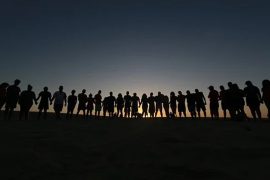It’s early morning in Cox’s Bazar, and the 34 Rohingya camps in the area are slowing coming to life. “When they initially came, we thought they would go back, but is almost two years, and they are still here,” says Halal who runs a small teashop on the highway adjacent to Camp 11 says.
The exodus that began in August 2017 has now brought more 700,000 Rohingya into the district, making it home to over one million Rohingya residing on Bangladesh’s soil. As the news of new restrictions on movement in the form of barbed wire fencing trickles in, a concern that is all too familiar washes over those residing in the semi-permanent shanties.
Was 2017 the Beginning
The plight of the Rohingya does not seem to end. Facing severe human rights abuses at the hands of Myanmar’s military junta, the Rohingya have been coming to Bangladesh since the 1970s. In 1978, over 200,000 Rohingya settled in fourteen camps – 13 around Cox’s Bazar and one in the Bandarban district. In light of worsening conditions in the camps, after intense negotiations between the Government of Bangladesh and Myanmar, Bangladesh repatriated them between 1978 and 1979.
In 1990, fleeing from Myanmar’s abusive military regime, around 250,000 Rohingya crossed the border and settled in nineteen camps around Cox’s Bazar. However, the Bangladeshi government repatriated over 230,000 Rohingya between 1993 and 1997.
-30-
Copyright©Madras Courier, All Rights Reserved. You may share using our article tools. Please don't cut articles from madrascourier.com and redistribute by email, post to the web, mobile phone or social media.Please send in your feed back and comments to [email protected]











